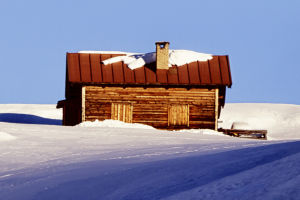As a popular winter sport, skiing attracts thousands of enthusiasts each year, drawn to the thrill and beauty of snowy landscapes.
However, while the excitement of skiing is undeniable, safety must always be a priority, especially when it comes to the cable cars that transport skiers up the mountains.
Understanding how to respond to sudden cable car failures is crucial for ensuring personal safety.
Here, Lykkers, Let’s provide an in-depth look at the causes of cable car failures and outlines effective response strategies and self-rescue measures to help ski enthusiasts remain calm and safe during emergencies.
Common Causes of Cable Car Failures
Cable cars at ski resorts are complex systems reliant on both mechanical and electrical components. Failures can occur for various reasons, and understanding these can help skiers respond more effectively when problems arise. Common causes include:
1. Mechanical Failures: These can involve loose cables, worn or broken gears, and other mechanical issues that disrupt the normal operation of the cable car.
2. Electrical Failures: Power outages or malfunctions in the control systems can halt cable car operations suddenly and unexpectedly.
3. Weather Conditions: Severe weather, such as high winds, heavy snowfall, or avalanches, can impede the operation of cable cars, sometimes causing them to stop entirely.
4. Human Factors: Errors in operation or maintenance can also lead to failures. Improper handling by staff or insufficient upkeep of the equipment can result in operational issues.
Strategies for Dealing with Sudden Cable Car Failures
When a cable car fails, the immediate response is crucial. Here are some effective strategies to handle the situation:
1. Stay Calm
The most crucial initial step is to stay calm. Panic can exacerbate the situation, leading to poor decision-making and increased danger. Take deep breaths, focus on staying composed, and prepare for the next steps.
2. Seek Help from the Staff
Modern cable cars are equipped with communication devices such as walkie-talkies or emergency call buttons. Use these tools to contact ski resort staff immediately. Report the situation clearly and follow the instructions provided by the staff, who are trained to handle such emergencies.
3. Follow Safety Guidelines
The ski resort staff are trained to manage cable car failures and will take appropriate actions such as emergency repairs or evacuations. Passengers should strictly adhere to the instructions given and avoid taking unauthorized actions that could worsen the situation.
Self-Rescue Measures
While waiting for assistance, several self-rescue measures can help ensure your safety and comfort:
1. Keep Warm
Cable car failures can sometimes result in prolonged stops, especially in cold weather. Hypothermia is a significant risk. Use any available clothing or warm items, such as blankets and gloves, to maintain your body temperature. Staying warm is essential for both physical health and maintaining mental clarity.
2. Avoid Strenuous Exercise
Strenuous movements can cause the cable car to shake, increasing the risk of further complications. Try to remain as still as possible to conserve energy and minimize danger.
3. Prepare Emergency Food and Water
Carrying emergency supplies such as food and water can be beneficial if the wait for rescue is extended. These supplies can help maintain your energy levels and prevent dehydration.
4. Pay Attention to Mental Health
Being trapped in a cable car can be stressful and anxiety-inducing. Distract yourself by chatting with fellow passengers, listening to music, or engaging in other calming activities to maintain a positive attitude and reduce psychological stress.
5. Learn Basic Rescue Knowledge
Having a basic understanding of rescue techniques and how to use emergency equipment can be invaluable. Familiarize yourself with the location and use of emergency equipment in the cable car, and learn basic first aid and self-rescue techniques.
Conclusion
While sudden failures of ski resort cable cars are rare, they pose significant risks to passenger safety when they do occur. By understanding the common causes of these failures and knowing how to respond effectively, skiers can ensure their safety and that of their fellow passengers.
In summary, preparation and knowledge are key to handling cable car failures. Stay calm, seek help, follow instructions, and employ self-rescue techniques to ensure a safe and enjoyable skiing experience.


